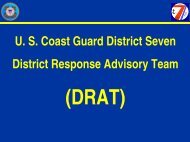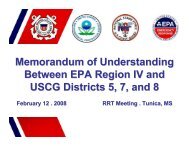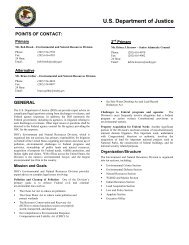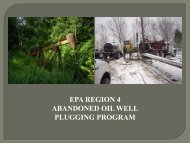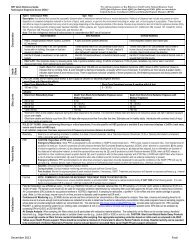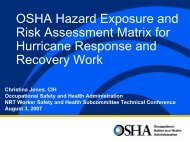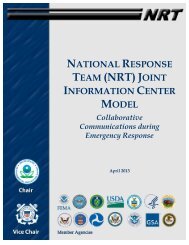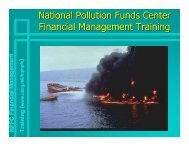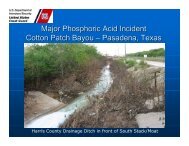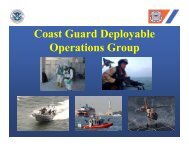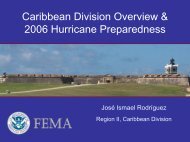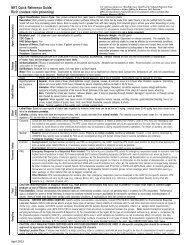USE OF DISPERSANTS - U.S. National Response Team (NRT)
USE OF DISPERSANTS - U.S. National Response Team (NRT)
USE OF DISPERSANTS - U.S. National Response Team (NRT)
- No tags were found...
Create successful ePaper yourself
Turn your PDF publications into a flip-book with our unique Google optimized e-Paper software.
MONITORING AIRCRAFT / MONITORING VESSEL / "MONITOR"A. The monitor aircraft or vessel or the "monitor" is primarily responsible for monitoring the effectiveness ofthe dispersant operation through aerial observation in aircraft and through the use of fluorometers onboard vessels to sample the dispersed oil.B. Effectiveness monitoring is concerned primarily with determining whether the dispersant was properlyapplied and how the dispersant is affecting the oil. This information is of interest to the OSC and anypotential RPs to ensure the process is being effective before pursuing the venture further. The goal is tofind a dispersant combination (type and application rate) that disperses the maximum amount of oil andminimizes environmental impact. An objective is to insure that the dispersant is responsibly applied tothe target (correct rate, minimal overspray). Once applied, if the dispersant appears to be working, thequestion shifts to the merits of a second or subsequent application. While being fiscally responsible, thefocus should be on the environmental benefits versus consequences of additional dispersant beingadded to the water. With lower toxicity of the dispersants available, it is almost always prudent toreapply dispersants if they are judged to be properly dispersing the oil.C. Effectiveness monitoring results are passed (as prearranged) either through the Dispersant OperationGroup Supervisor or directly to the Scientific Support Coordinator and the Federal On-SceneCoordinator.D. The specific duties of the Monitoring Aircraft/Vessel and Monitor are as follows:• Monitors dispersant effectiveness through fluorometry• Ensures fluorometry data is made available to the Federal On Scene Coordinator (FOSC)through the Scientific Support Coordinator (SSC)• Personnel are normally deployed as a fluorometry monitoring team on a monitor vessel(s) orobservation vessel(s) to measure dispersed oil in the water column• Documents monitoring activities as required in the Dispersant Operation Plan• Obtain photos, digital imagery, video, and infrared imagery as appropriate to documentoperation• Identify remote sensing and tracking requirements and the applicable support needed.• Early launch is desirable for SMART monitoring teams, aircraft, and other operationalcomponents. Use DRAT to help coordinate logistics.• Use tracking buoys. Plan ahead for availability. Buoys will assist tracking the slick at night andwill also help with trajectory work.• Identify choices for remote sensing.• Unified Command should use SMART for monitoring operations.• Monitoring must be integrated into overall operation.• Monitors must have compatible communications with other operational elements.



